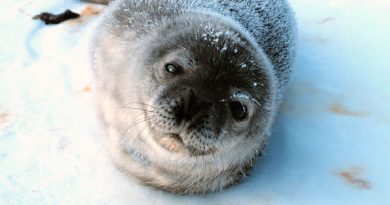North Pole ice cap too thin for testing Russia’s giant icebreaker

The Arktika icebreaker will have to undergo a second test-voyage to prove its capabilities to crush thick and hard sea-ice.
After reaching the North Pole on her maiden voyage, the communication department of Atomflot sent a press release claiming the vessel to have confirmed its characteristics in ice conditions. The release also said Arktika on the way to the North Pole sailed through three meters ice thickness.
The statement was likely premature. Head of the icebreakers acceptance team, Oleg Shchapin, says new tests in the ice have to take place, news agency TASS reports.
“Ice tests are still ahead, probably this year, because now ice tests did not work out, the ice thickness was 1,1 to 1,2 meters. It was thin and loose, the icebreaker received no resistance at all,” Shchapin says.
He adds: “We tried to find a three-meters ice floe, but they did not find it.”
Shchapin did not elaborate on where to find three meters thick ice. Currently, the entire Northern Sea Route north of Siberia from the Kara Sea to the Bering Strait is open waters. The ice cap further north has never been reported weaker and thinner than this year.
Arktika to work Northern Sea Route staring in December
Multiyear sea ice is currently only found in the waters north of Canada, Alaska and Greenland.
Sailing out from the Baltic Shipyard in St. Petersburg on September 22nd, Arktika sailed straight to the North Pole before heading south and calling to her new homeport Murmansk on October 12.
The official commissioning of Arktika took place on Wednesday, October 21, in a ceremony in Murmansk attended by Russian Prime Minister Mikhael Mishustin. It is also the prime minister who signed the acceptance decree.
From December, Arktika will start to plow through ice along the Northern Sea Route. Next summer, however, a new starboard propulsion motor will be installed as the original one experienced a short-circuit and stopped working after trail-sailings in the Gulf of Finland in February this year. Arktika has three similar propulsion motors.
The icebreaker is the first in a series of five nuclear-powered vessels of Project 22220.
The four other vessels in the class are named Sibir, Ural, Yakutiya and Chukotka. They are expected to start operations from 2021 to 2027.
All will be based in Murmansk, but mainly operate along the Eastern sector of the Northern Sea Route.
Related stories from around the North:
Canada: Canadian Coast Guard adds three weeks to Arctic season as icebreakers head North, CBC News
Greenland: Year-long, international Arctic science expedition comes to an end, Eye on the Arctic
Russia: Russia’s Rosatomflot files lawsuits against shipyard as world’s most powerful icebreakers are notoriously delayed, The Independent Barents Observer
Sweden: Sweden’s FM calls for more EU involvement in Arctic as country hosts EU Arctic Forum, Radio Sweden
United States: Trump advances new icebreaker plan, Alaska Public Media



